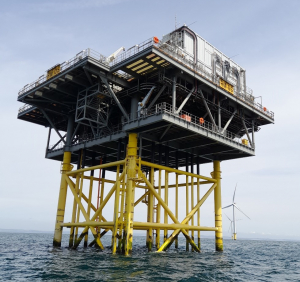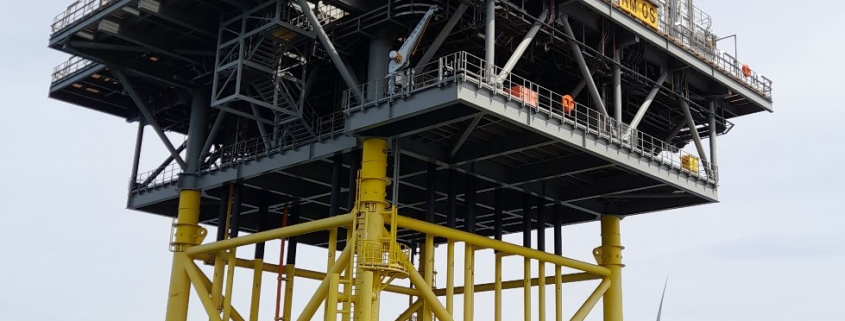Rampion Wind Farm Providing Green Energy Since 2018
 Recently, as a milestone birthday treat, I took a boat trip out to the Rampion Wind Farm which lies 13 kilometres from the shoreline on the South Coast and covers a total area of 72sq. kilometres.
Recently, as a milestone birthday treat, I took a boat trip out to the Rampion Wind Farm which lies 13 kilometres from the shoreline on the South Coast and covers a total area of 72sq. kilometres.
This impressive feat of engineering has been providing green energy since 2018 to around 350,000 homes – around half the homes in West Sussex.
It is quite an experience to be near one of the turbines which stand 80m tall with three rotating sculpted arms each 55m in length. When you are close to them you can hear a gentle whoosh as they rotate. Whilst I was there the tip of a blade of one turbine was undergoing repairs by an engineer suspended precariously above the sea! The boat skipper said that repairs were a rarer sight than seeing dolphins in the area.
Each turbine feeds energy to an offshore substation that slightly resembles an oil rig platform – but nothing like as damaging to the planet. Undersea cables transfer the energy to shore and then underground for a further 27 kilometres to another substation near Bolney. It is calculated the farm saves around 600,000 tonnes of carbon emissions per annum
Above the sea, the turbines do cause problems for some birds but I understand the site was carefully located to minimise bird strikes and the damage is less than was feared. It is said climate change causes far more harm to all forms of marine life than wind farms. On the other side of the coin, the birds can feed on the abundant fish in the area as it has proven to be an excellent marine habitat for sea life. Trawling for fish is banned so only rod and line fishing or static catch such as lobster pots are permitted.
The life span of the turbines has been calculated at around 25 years and this could be a significant environmental concern particularly when multiplied by the ever-increasing number of wind farms across the world. Some of the component parts are already recyclable, but others such as the fibreglass and carbon fibre of the blades are proving a challenge to those companies who are working on innovative recycling technologies – taking all environmental factors into account, however, wind farms are hugely preferable for the planet and climate than traditional forms of energy.
Rampion II, which is scheduled to be commissioned by 2030 will extend the project westwards with a further 116 turbines each generating up to 15mw as against the current 3.45mw per turbine, and providing energy for well over a million homes. Importantly, it will further reduce carbon global warming and our reliance on fossil fuels.
By Paul Bellringer OBE
Chair, Sussex Green Living




